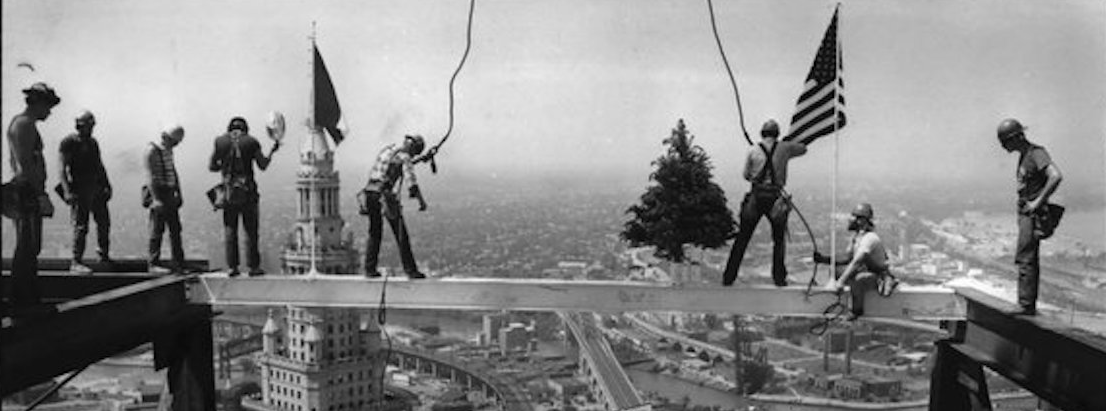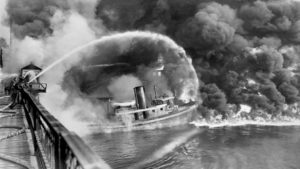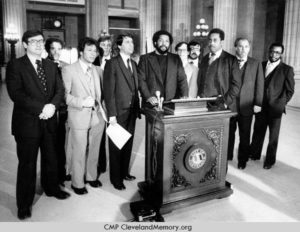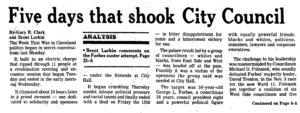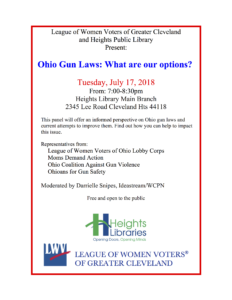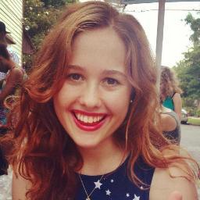MUSEUM RIGHT TO DROP MAY SHOW
March 4, 1995 | Plain Dealer, The (Cleveland, OH)
| Page: 8E | Section: ARTS & LIVING | Column: ART CRITIC
The Cleveland Museum of Art’s annual juried exhibition of local art, has been the apex of local artistic accomplishment since it began in 1919. That’s exactly what has been wrong with it, and exactly why the museum is right to dump it.
Cleveland needs higher goals to which local artists can aspire.
The May Show played a vital role in nurturing generations of artists before and after World War II. But as artists have increasingly shown work in new commercial and nonprofit galleries, frame shops, theater lobbies, corporate offices, colleges and universities, the May Show’s raison d’etre evaporated. Instead of being a proud medium for the appreciation of local art, it became a tired vehicle for overexposure and redundancy.
Museum Director Robert P. Bergman, who came to Cleveland in 1993, has stated publicly for more than a year he would experiment with ways in which the museum exhibits local contemporary art. He said the May Show wasn’t sacrosanct. But it wasn’t until last week that he said the show was off for the near future.
His announcement was occasioned by artists who daily were calling Tom Hinson, the museum’s curator of contemporary art, to ask for May Show entry blanks, as they have every winter for decades. Predictably, many artists complained that the museum was forsaking them by canning the May Show. But it isn’t. Nor is it turning its back on contemporary art.
In August, the museum will host an exhibition on contemporary art inspired by the secular sainthood of Elvis Presley and Marilyn Monroe. Admittedly, the show is an attempt to piggyback on the Labor Day weekend opening of the Rock and Roll Hall of Fame and Museum. But it’s a welcome change after years in which the museum failed to devote major space to contemporary art from outside the Western Reserve.
In 1996, the city’s bicentennial year, the museum is planning a much-needed historical survey on art in the city from 1796 to 1945, tentatively titled “Transformations in Cleveland Art.” The show will include a catalog, which will be a major contribution to public understanding of the city’s art.
The museum is also planning a collaborative exhibition for 1996 with the Cleveland Center for Contemporary Art and Spaces. Artists from the region, the nation and from other countries will be asked to create new works inspired by the city itself.
Exciting as they sound, these shows would not have been possible if the May Showwere still on the calendar. Budget cuts in 1992 limited the museum to four slots a year for major shows, one of which is devoted to contemporary art. Repeating the May Show ad infinitum would prevent the kind of experimentation Bergman wants to explore.
The next two years will give time for a debate on how the city’s leading arts institutions should serve the region’s artists. Without question, they have an obligation to nurture local talent. But the May Show is not the way.
All the show asked of artists was that they produce one or two good works a year – the limit they could display in the exhibition. By focusing attention thinly on a hundred or more artists, the show appealed to boosterism rather than deep understanding.
All the show asked of collectors was that they come and graze once a year. Apparently, this didn’t fuel a thriving commercial gallery scene, because the city doesn’t have one. Northeast Ohio has a generous supply of artists who want their work appreciated and scores of widely scattered exhibit venues. But the number of serious commercial galleries is minute. Rather than stimulate the local market, the museum may have hurt it by selling works out of the May Show.
For the museum, the show put curators and other jurors in a passive role unflattering for an institution that otherwise prides itself on intellectual rigor. The format required curators or jurors to choose the artworks from those submitted by artists who chose to submit. If the best artists didn’t submit anything, they remained invisible, and the audience remained none the wiser.
It could be argued that the Cleveland Center for Contemporary Art and Spaces – two important nonprofit exhibit spaces that have emerged in the past 20 years – have filled the gap in contemporary art. They have, but only up to a point.
Spaces concentrates on emerging artists from around the region and the nation, which effectively duplicates the May Show’s primary function as the patron of local artistic talent searches.
The center also has focused attention on emerging local talent, although it does much more by organizing retrospective shows on midcareer artists and by staging ambitious theme shows.
But while the center’s ambitions are national in scope, it can’t afford to do contemporary shows on the order of the sprawling survey of German neo-expressionist painting mounted by the Toledo Museum of Art in the winter of 1988-89. Nor can the center aspire to the likes of the Guggenheim Museum’s Roy Lichtenstein retrospective, which the Wexner Center in Columbus will show next fall.
The Cleveland Museum of Art can, and should, host such exhibitions. Furthermore, it should organize its own contemporary shows, whether local, regional or national in scope, with the same scholarly standards it applies to the art of ancient Greece or 16th-century Japan.
It could be that the Cleveland Center for Contemporary Art should be the new home of an annual or biannual survey of regional art. The center has the space, the staff, the resources, the central location and the parking. It also has a mission that could encompass an annual, biennial or triennial local survey show.
Whatever happens, the museum is wise to break the lockstep rhythm of a once prestigious annual show that has gone stale. Now it can go about the business of doing the exhibitions that only it can do.
